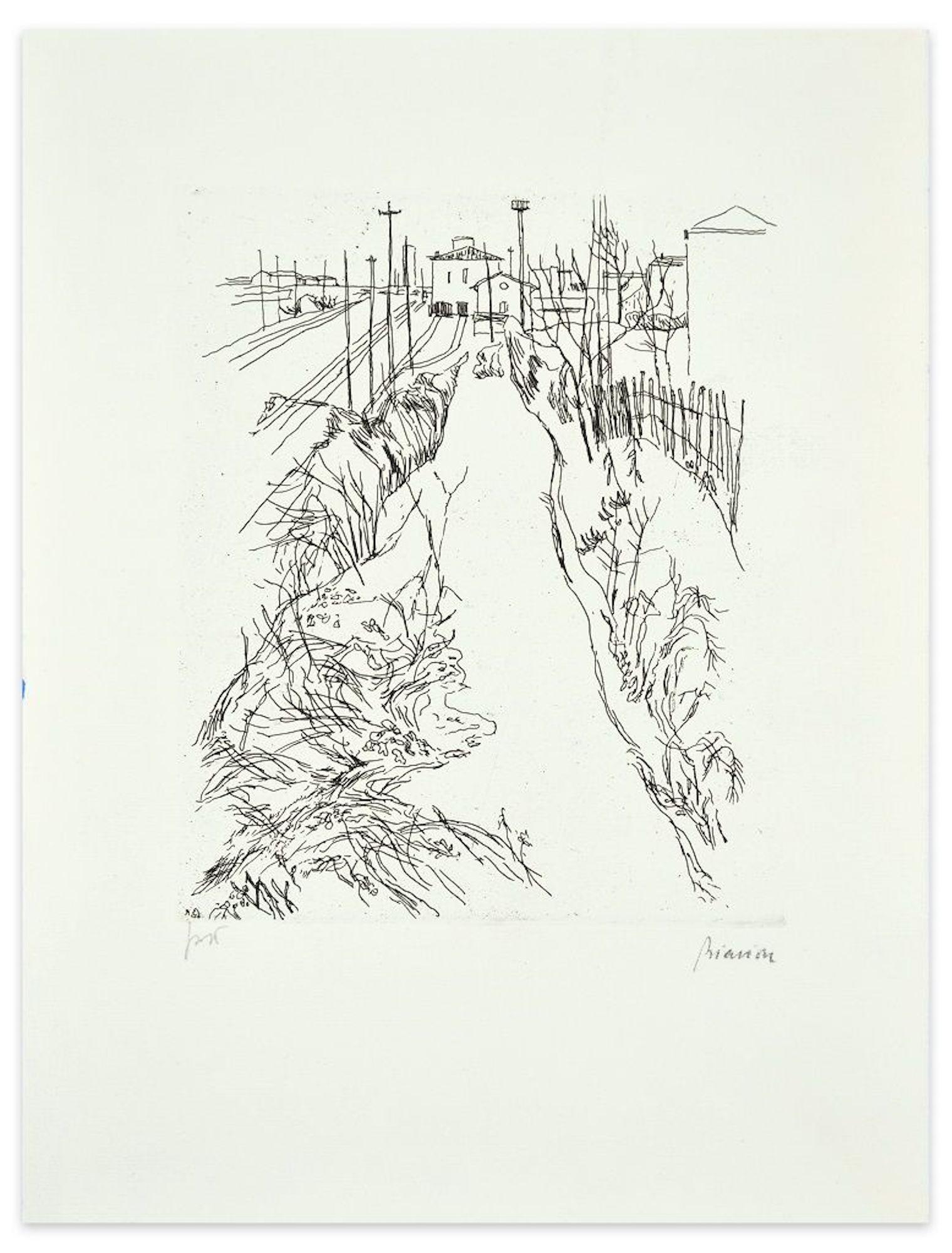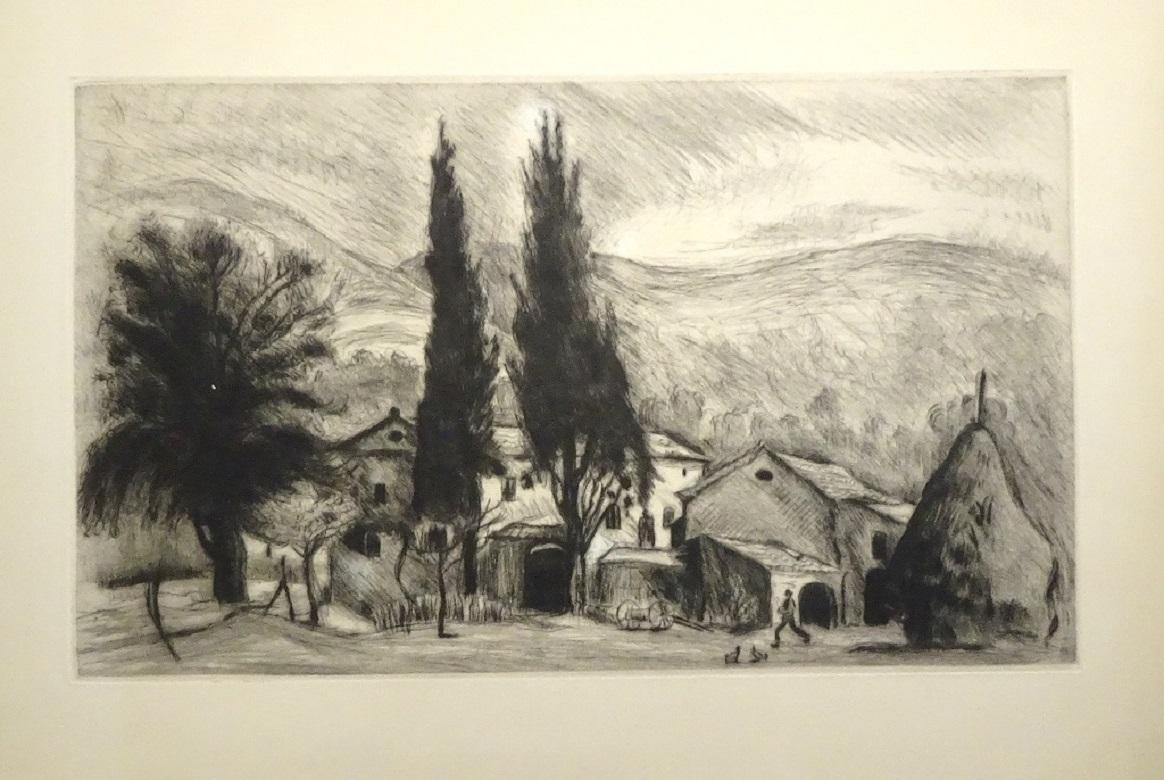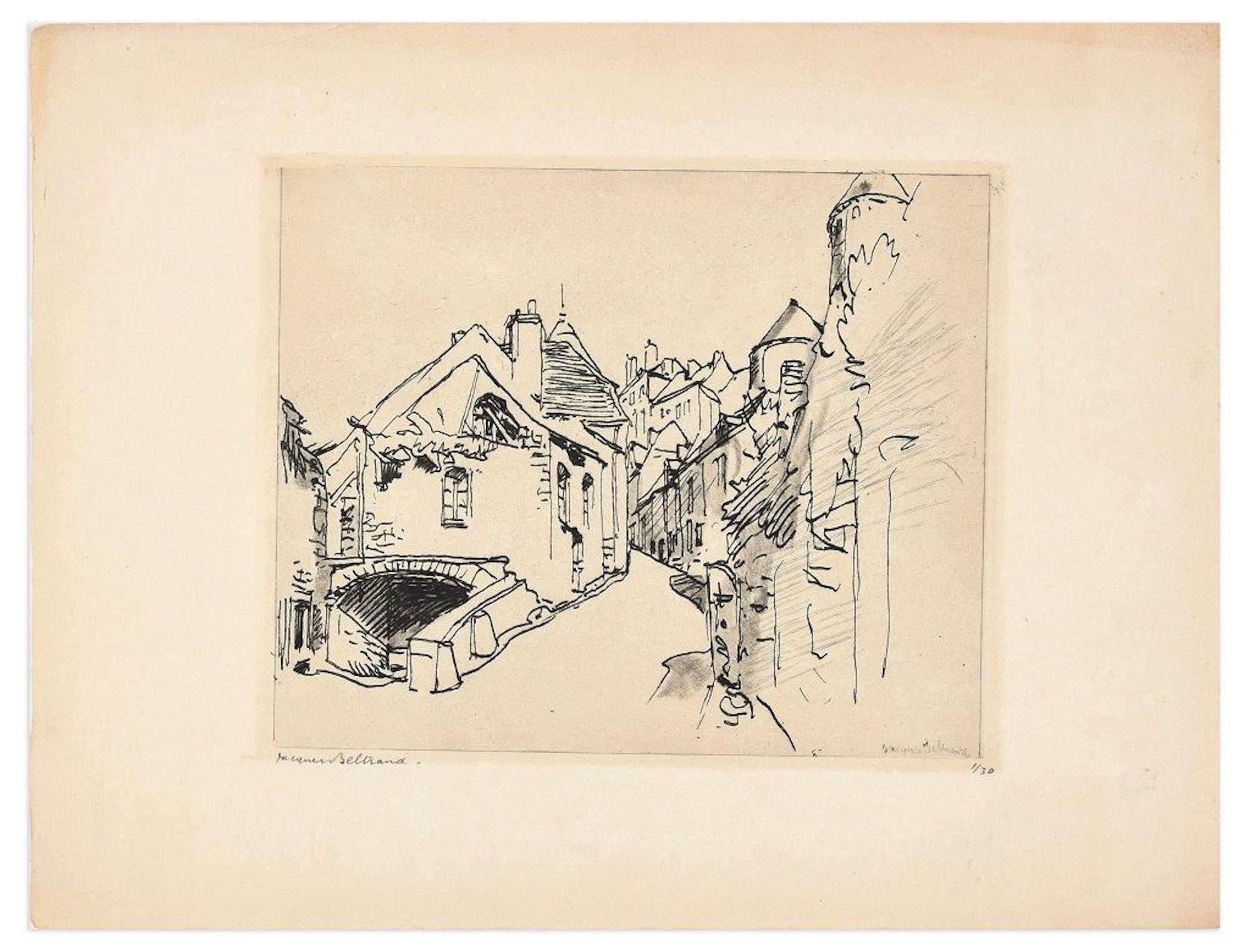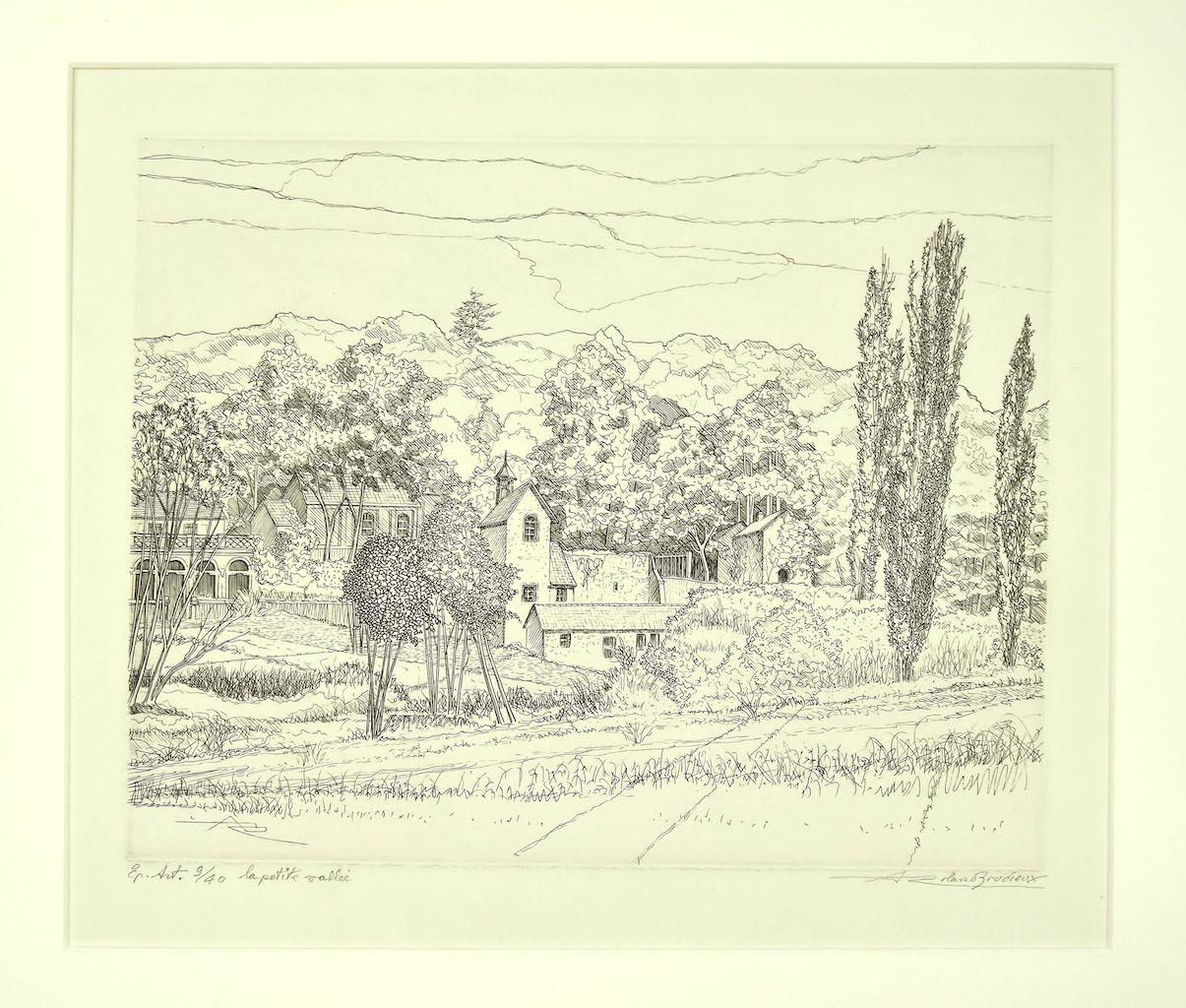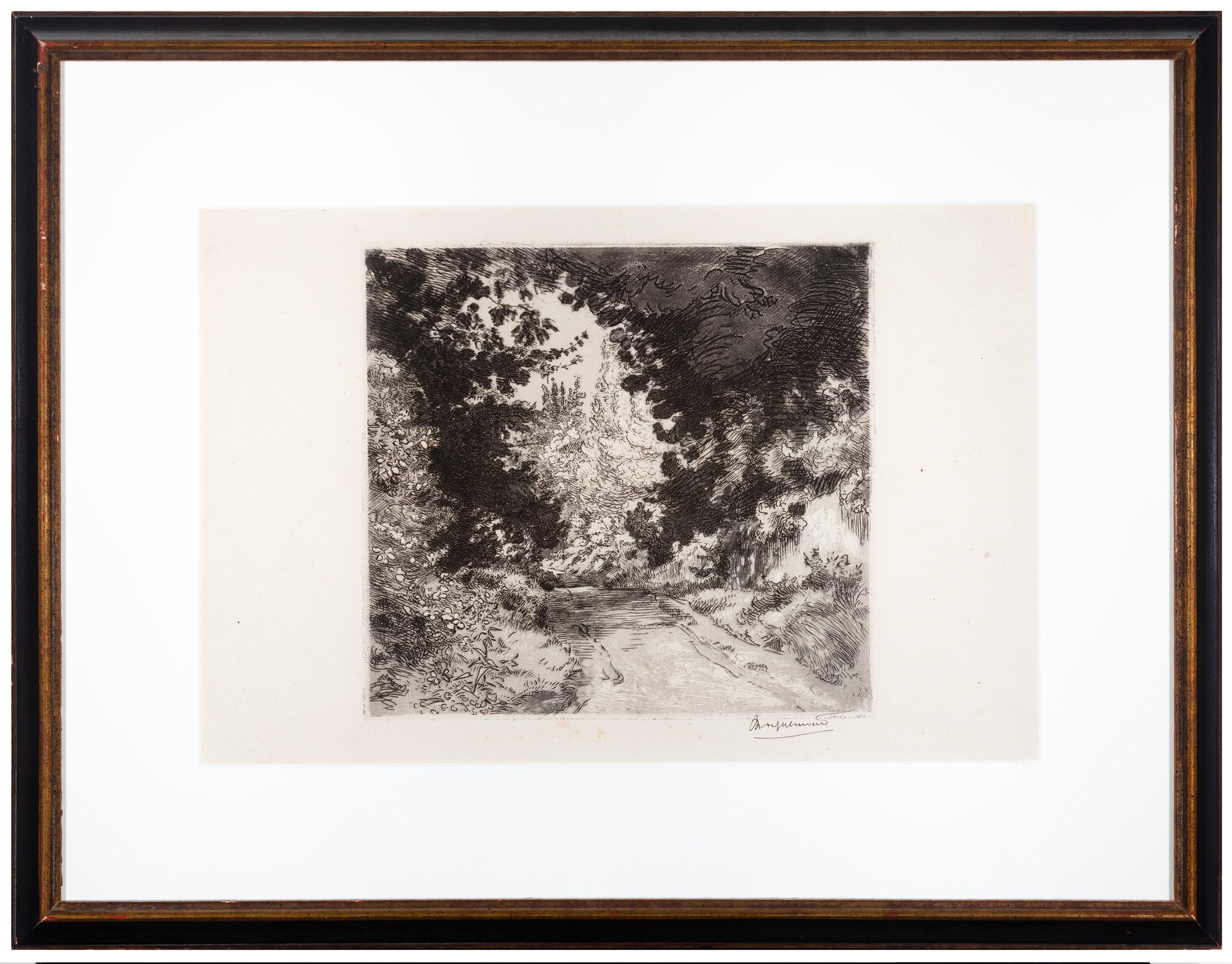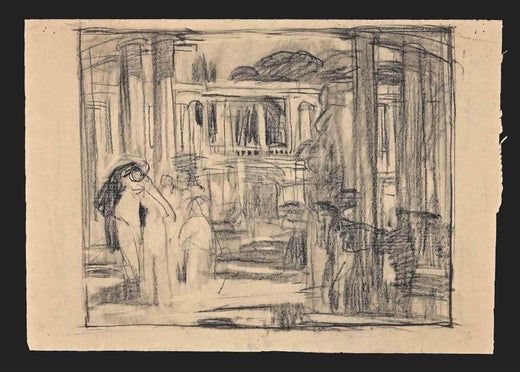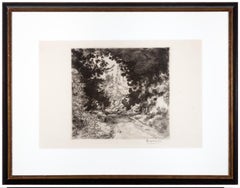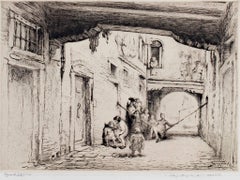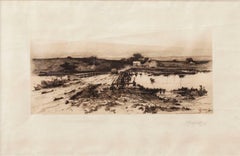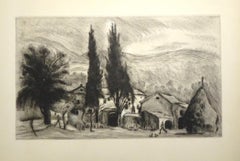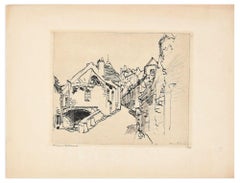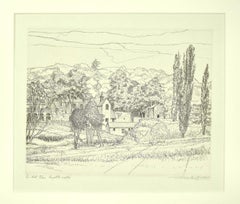Hermine David"Passage a Village, " Original Drypoint, Signed1928
1928
About the Item
- Creator:Hermine David (1886 - 1970, French)
- Creation Year:1928
- Dimensions:Height: 21.625 in (54.93 cm)Width: 17 in (43.18 cm)
- Medium:
- Period:
- Framing:Frame IncludedFraming Options Available
- Condition:
- Gallery Location:Milwaukee, WI
- Reference Number:Seller: 626d1stDibs: LU605312785492
Hermine David
Hermine David was one of the École de Paris artists, a group of non-French artists working in Paris before the first World War. Jules Pascin was another member of the same artistic group whom she met in 1907. By then, she was already well-established as a successful young painter, miniaturist and printmaker. David and Pascin soon became lovers and lived together in a series of studios in the bohemian communities of Montmartre and Montparnasse. She followed Pascin to the United States in 1915, where they were married a few years later and stayed for five years. David exhibited in New York during her residence there. In 1920, after returning to France, she exhibited in London and in several solo shows at prominent galleries in Paris. David was widely appreciated by both critics and collectors. While her finest work dates to the 1920s and '30s, including the book illustrations for which she developed a passion in the '20s, she was active into the '60s, winning a watercolor prize at the Biennale de Deauville in 1965. She outlived her husband by forty years, dying in 1970.
- ShippingRetrieving quote...Shipping from: Milwaukee, WI
- Return Policy
More From This Seller
View All1870s Impressionist Landscape Prints
Etching, Aquatint
1790s Old Masters Landscape Prints
Paper, Etching
1920s Modern Figurative Prints
Etching
1880s American Realist Landscape Prints
Etching
1880s Landscape Prints
Etching
1880s American Impressionist Landscape Prints
Etching
You May Also Like
Mid-20th Century Figurative Prints
Etching
20th Century Modern Landscape Prints
Drypoint
Early 20th Century Modern Figurative Prints
Etching
1970s Modern Landscape Prints
Etching
1930s Modern Figurative Prints
Drypoint, Etching
Mid-20th Century Figurative Prints
Etching
